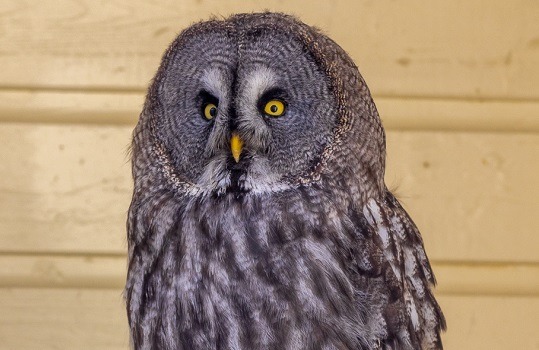Great grey owl

Let's learn
The great grey owl is not just a pretty face! It’s distinctive large facial disks or ‘ruffs’ around the eyes are specially designed to catch and direct sound to the ears – making this owl’s hearing supercharged. And that’s just as well, as it will often have to hunt for its food in thick snow, which it will plunge for, using its long, feathered legs to grapple with its prey.
A great grey owl can sense it’s prey from a distance, and under 2 feet of snow. It will regularly patrol looking for prey as in harsh weather conditions they can’t afford to miss a single opportunity to feed. When food is scarce, the female great grey owl will starve herself in order to feed her young, and can lose up to a third of her bodyweight.
Conservation status | Least concern
Fact Sheet
Scientific name
Strix Nebulosa
Family
Strigidae
Order
Strigiformes
Lifespan
In the wild, about 12 years. In captivity, 30 to 40 years.